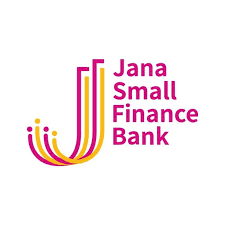There are no rules on when a company should compulsorily list itself on the stock exchanges after it has commenced business.
But in the case of small finance banks, the case seems to be different. There is a RBI regulation which states that small finance banks in India need to list themselves on stock exchanges within a timeline of three years of commencing their business.
If any small finance bank fails to comply with this rule, have penalties are levied by the RBI. Hence, small finance banks have to list themselves within this time limit irrespective of the general market conditions.
On the backdrop of this, a small finance bank, namely, Jana Small Finance Bank is coming up with its IPO and has filed its draft papers with the SEBI. So let us have a look at the bank’s business fundamentals.
About the company

Jana Small Finance Bank is one of the leading Small Finance Banks in India in terms of assets under management and deposit size as of March 2020. The company has the second-most geographically diversified portfolio with a pan-India presence among all Small Finance Banks in India. As of February 2021, the bank had 611 branches and 134 ATMs located in 229 districts in 19 states and three union territories. The bank has served 8 million customers since 2008.
The bank was initially registered as a NBFC on March 4, 2008. The bank’s primary secured loan offerings include affordable housing loans, MSME loans, gold loans, loans against fixed deposits, term loans to NBFCs, two-wheeler loans, and micro housing loans. The bank also acts as a corporate agent for third-party life insurance products, general insurance products, and health insurance products.
Details about the IPO
Following are the details about the company’s IPO:
- The bank is not yet out with the IPO subscription dates.
- The bank is not yet out with the IPO price range.
- The bank’s shares will list on the NSE and the BSE.
Objectives of the IPO
Following are the objectives of the bank’s IPO:
- The entire IPO issue will be a combination of offer for sale and a fresh issue. The bank will receive gross proceeds from the fresh issue to the tune of ₹700 crores.
- Out of the net proceeds from the fresh issue part, the bank will use it to augment its tier-I capital base to meet the bank’s future capital requirements.
- A part of the fresh issue proceeds will also be used towards meeting offer related expenses.
- Further, the bank will enhance its credibility by listing its shares on the exchanges.
Key strengths
Following are the key strengths of the company:
- The bank is a new age digitalized bank with its core banking being supported by integrated multi-channel operations, both on mobile and internet.
- The bank has a robust risk and governance framework.
- The bank has a professional and experienced management team and board of directors, which are backed by reputed shareholders.
- The bank is a customer-centric organization with more than 14 years of experience in serving under banked and underserved customers.
- The bank has a pan-India presence with strong brand recognition.
- The bank has a fast growing retail deposit base and a diversified liability franchise.
Key risks
Following are the key risks that the bank faces in its business:
- The bank had material provisions for non-performing assets and bad debts written off.
- The bank’s business is significantly dependent on unsecured loans, and any adverse events in the microfinance sector would not bode well for it.
- The bank is subject to stringent regulatory approvals.
- The bank is involved in certain legal proceedings, and any adverse outcome related to these proceedings could affect the bank’s business operations.
- The small finance segment is extremely competitive and fragmented.
Fundamentals about the company
Following are the details about the fundamentals of the company:
- The bank’s total income increased from ₹7.1 crore in FY18 to ₹8.3 crores in FY20.
- The bank posted a loss of ₹14.3 crores in FY18, which stood at ₹5.2 crores in FY20.
- The bank’s earnings per share stood at -₹17.01 as of FY20.
- The bank’s net asset value stood at -₹31.68 as of FY20.
- The bank’s ratio of CASA to total deposits was 7.4% at the end of FY20.
Peer comparison
Jana Small Finance Bank classifies Equitas Small Finance Bank, Ujjivan Small Finance Bank, CreditAccess Grameen Limited, Spandana Sphoorty Financial Limited, Bandhan Bank Limited, and AU Small Finance Bank Limited among its peer group. Jana Small Finance Bank’s return on net worth stands lower than that of its peers at 2.93%.
Conclusion
So these were the business fundamental details about Jana Small Finance Bank. The bank is not yet out with the IPO subscription dates and IPO pricing, through which investors can determine company valuations.
Thus, investors should take a decision regarding investing in the bank’s IPO only after these details are revealed and also by doing further due diligence on the bank’s risk and business characteristics.






